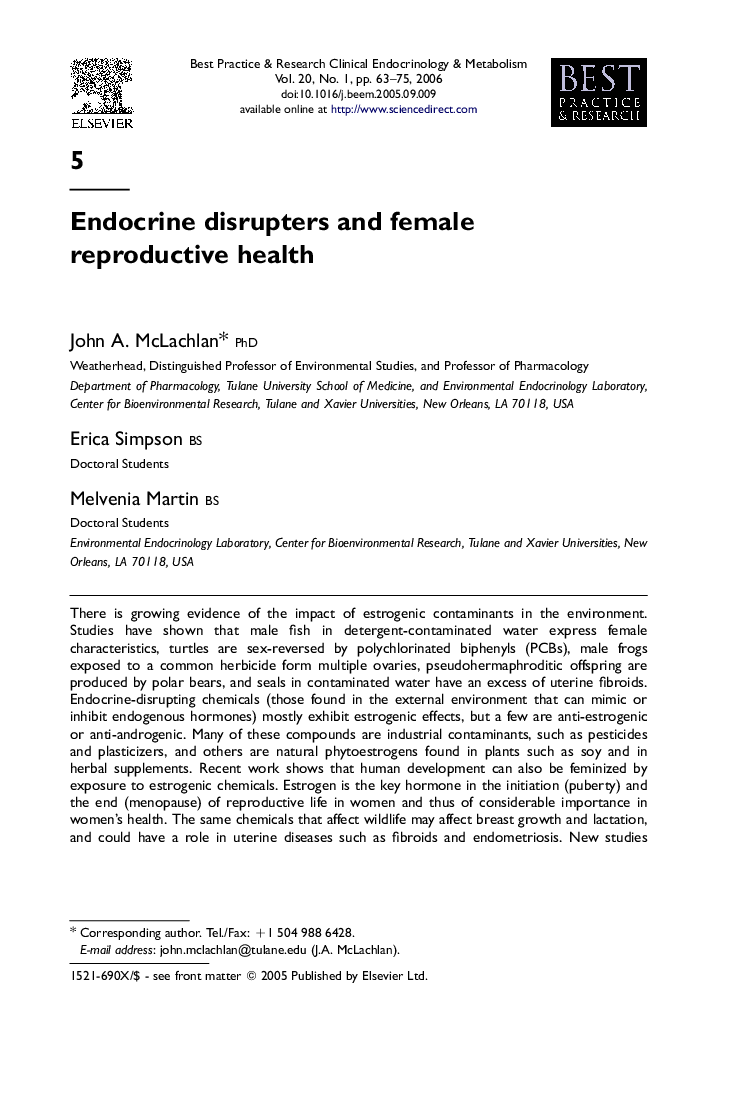| کد مقاله | کد نشریه | سال انتشار | مقاله انگلیسی | نسخه تمام متن |
|---|---|---|---|---|
| 2792281 | 1155025 | 2006 | 13 صفحه PDF | دانلود رایگان |

There is growing evidence of the impact of estrogenic contaminants in the environment. Studies have shown that male fish in detergent-contaminated water express female characteristics, turtles are sex-reversed by polychlorinated biphenyls (PCBs), male frogs exposed to a common herbicide form multiple ovaries, pseudohermaphroditic offspring are produced by polar bears, and seals in contaminated water have an excess of uterine fibroids. Endocrine-disrupting chemicals (those found in the external environment that can mimic or inhibit endogenous hormones) mostly exhibit estrogenic effects, but a few are anti-estrogenic or anti-androgenic. Many of these compounds are industrial contaminants, such as pesticides and plasticizers, and others are natural phytoestrogens found in plants such as soy and in herbal supplements. Recent work shows that human development can also be feminized by exposure to estrogenic chemicals. Estrogen is the key hormone in the initiation (puberty) and the end (menopause) of reproductive life in women and thus of considerable importance in women's health. The same chemicals that affect wildlife may affect breast growth and lactation, and could have a role in uterine diseases such as fibroids and endometriosis. New studies provide a mechanism of action for estrogenic chemicals and other endocrine disrupters at the molecular level (called epigenetics) that may help explain the long-term effects of endocrine disruption.
Journal: Best Practice & Research Clinical Endocrinology & Metabolism - Volume 20, Issue 1, March 2006, Pages 63–75